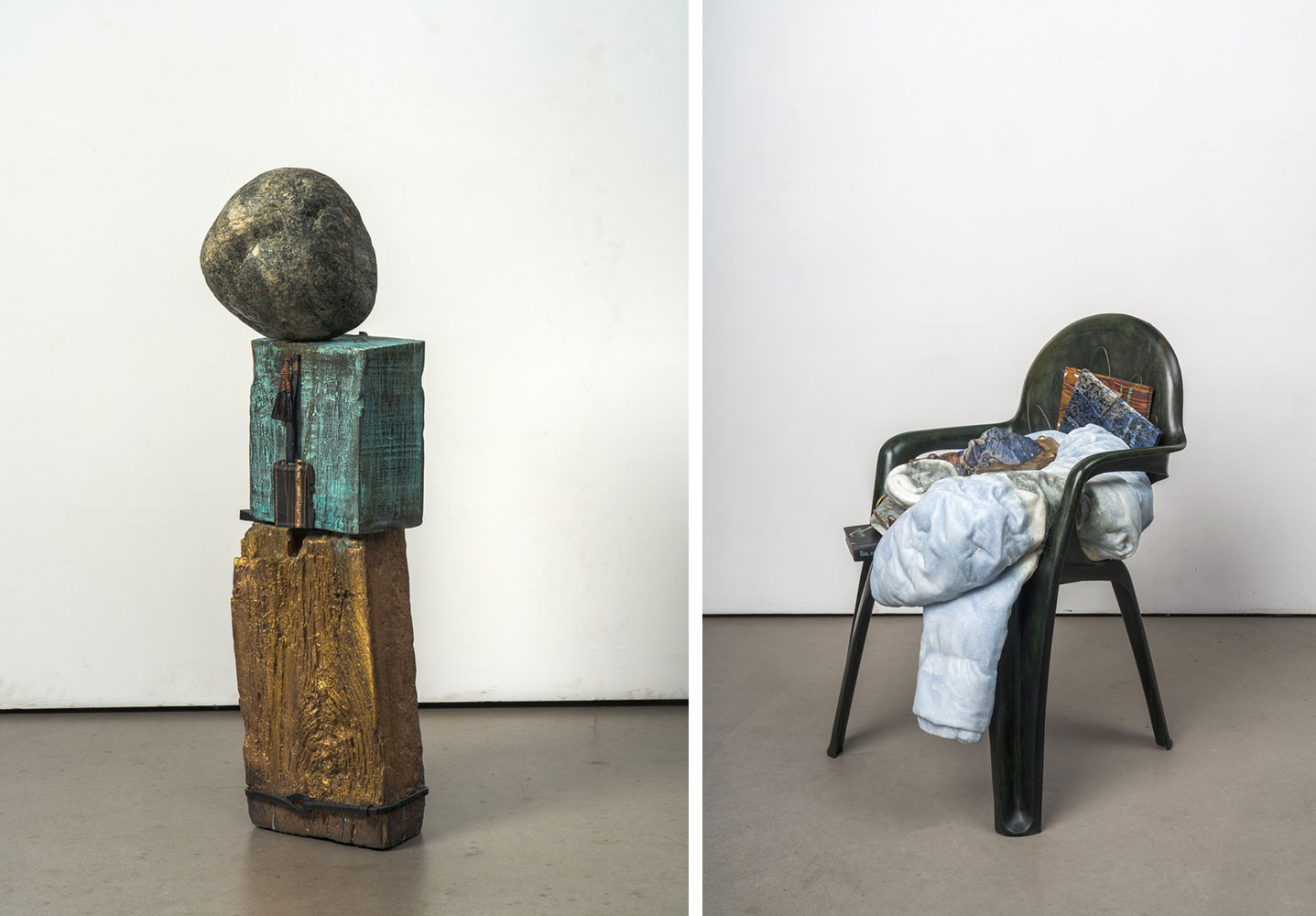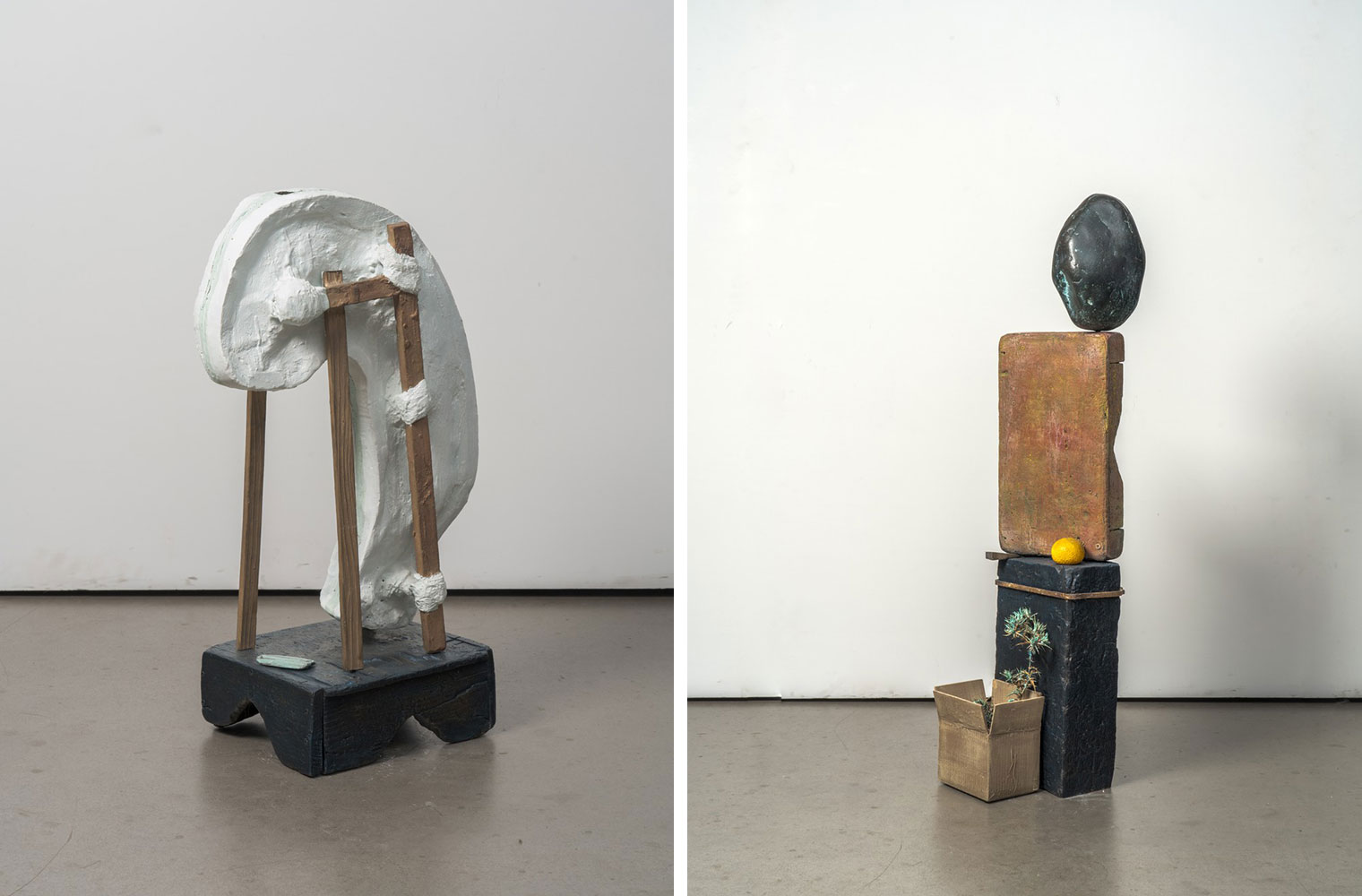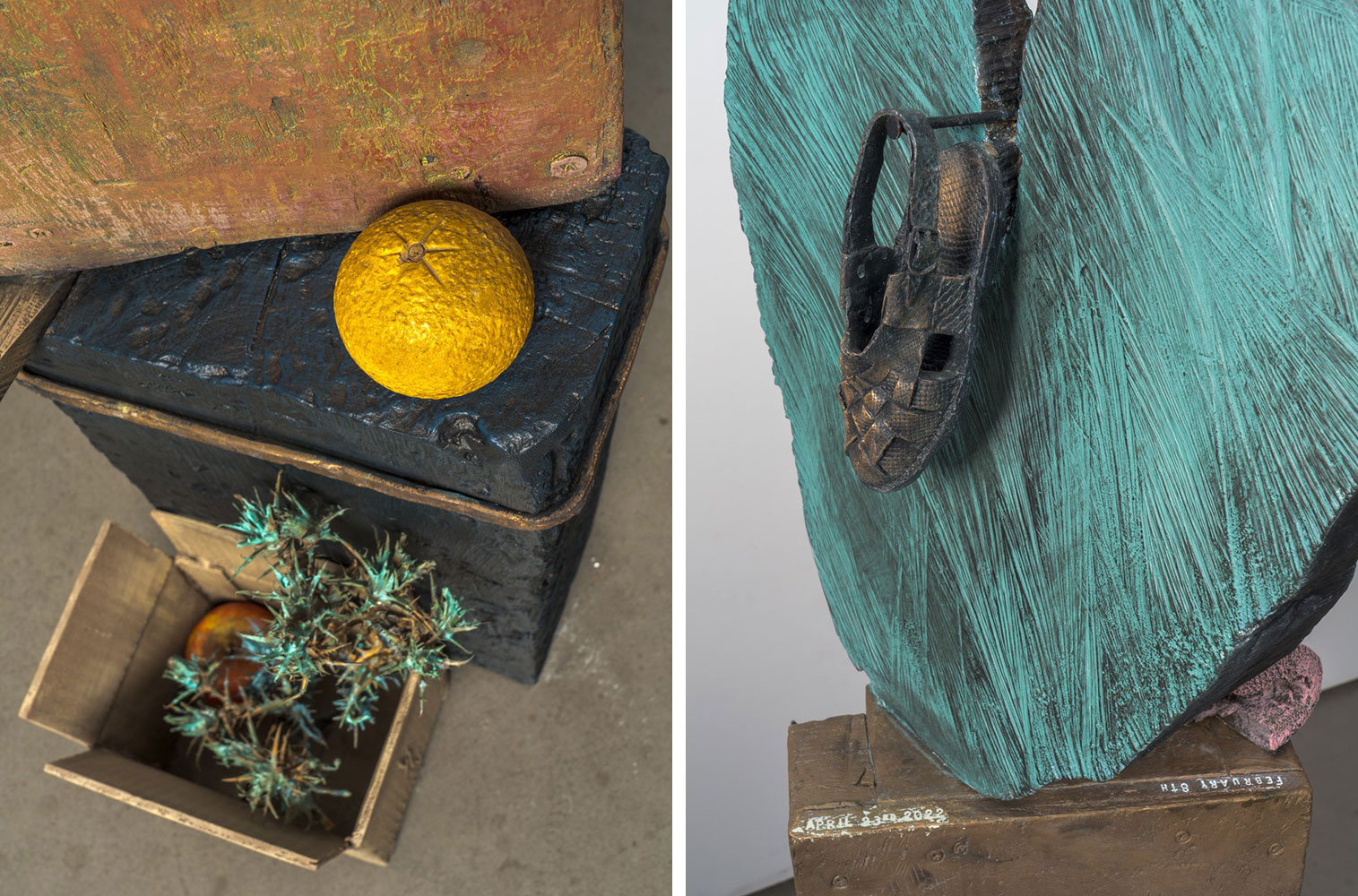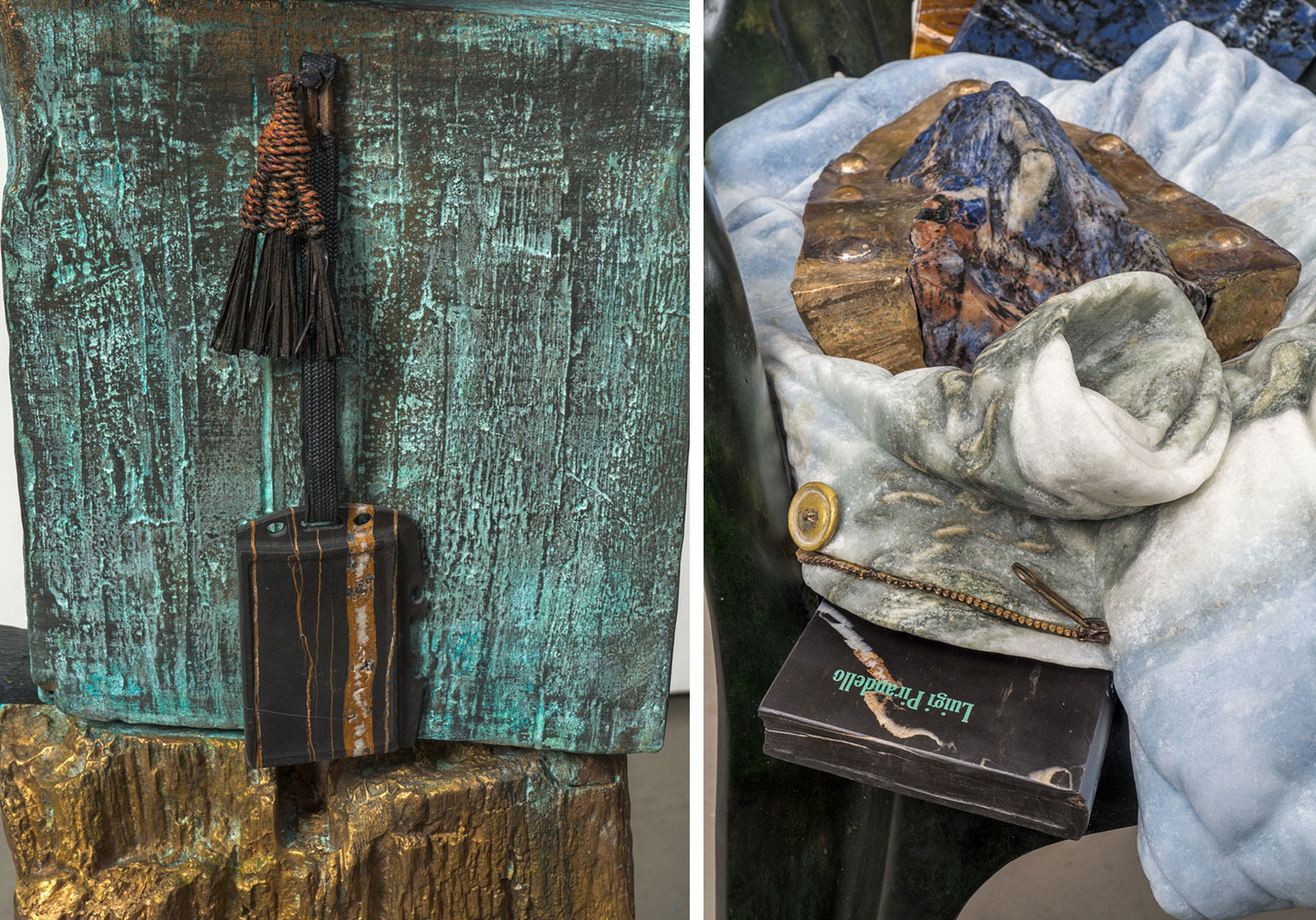ART CITIES: Paris-Tatiana Trouvé
 In her large-scale drawings, cast and carved sculptures, and site-specific installations, Tatiana Trouvé assesses the relationship between memory and material, pitting the ceaseless flow of time against the remarkable endurance of common objects. By pushing the very definitions of “copy,” “echo,” and “image,” she invents, even inhabits, environments that straddle studio, street, landscape, and dream.
In her large-scale drawings, cast and carved sculptures, and site-specific installations, Tatiana Trouvé assesses the relationship between memory and material, pitting the ceaseless flow of time against the remarkable endurance of common objects. By pushing the very definitions of “copy,” “echo,” and “image,” she invents, even inhabits, environments that straddle studio, street, landscape, and dream.
By Efi Michalarou
Photo: Gagosian Archive
Tatiana Trouvé in her solo exhibition in Gagosian Gallery in Parsi presents an installation of new sculptures (all from 2022) from her “Notes on Sculpture”, a series she began in 2016, and “The Guardian”, a sculpture from a body of works initiated in 2013. These totemic works are arrayed in front of wallpaper that reproduces “L’Escamoteur” a drawing that is featured in her Centre Pompidou exhibitionat an expansive scale. The works in “Notes on Sculpture”function both as autonomous sculptures and as annotations to material and conceptual aspects of Trouvé’s practice. Blocks of wood and everyday objects—a cardboard box, thistle, sandal, flowers—have been cast in bronze, and pieces of fruit carved in stone. These disparate elements are stably composed but appear provisionally assembled and precariously balanced, shimmed with bronze wedges and wrapped by metal bands. One of the sculptures is an illusionistically painted bronze cast of a plaster mold and scaffolding that was itself used to make an editioned casting—a mysteriously oblique artifact of the sculpting process. The Guardian consists of a chair cast in bronze, a hooded jacket in marble, a cast-bronze mold that holds a carved sodalite reproduction of the positive form within, a lighter, and books about identity and multiple selves by Luigi Pirandello, Witold Gombrowicz, and Maria José (Fernando Pessoa). Trouvé’s “The Guardian” and “Notes on Sculpture” both employ disparate objects to suggest the presence of figures who are paradoxically absent. Moreover, many of their elements are repurposed from other series, creating new works that point to physical and conceptual synergies throughout her oeuvre. These connections are reinforced by the wallpaper image of “L’Escamoteur”, a drawing from “Les Dessouvenus”, a series she began in 2013. The series title translates to “The Unremembered,” a Breton expression used to refer to people who have lost their memories. To make these works, Trouvé applies bleach to colored paper, which desaturates it in unpredictable ways, then draws on the resulting shapes in pencil. The ambiguous perspectives of this image conjure the linear and planar forms of her installations, suggesting an exhibition space as well as a studio interior. Notes on Sculpture also shares its title with an influential group of essays written by artist Robert Morris from 1966 through 1969 that considers the process of making and viewing sculptures in phenomenological terms. Investigating possible means of conceiving art, Trouvé moves beyond notions of formal autonomy, introducing instead a sense of marvelous disorientation and discovery.
Born in Cosenza (Calabria) in 1968, Tatiana Trouvé spent her childhood in Dakar, before moving to France where she studied art at Villa Arson (Nice), followed by two years at Ateliers 63 in Haarlem (Netherlands). Today, she is one of the most international artists of her generation and has exhibited all over the world. Her works feature in major public and private collections in France and abroad. Winner of the Paul Ricard Prize in 2001, she was awarded the Prix Marcel Duchamp in 2007 and then the Rosa Schapire Award in 2019. Since moving to Paris in the mid-1990s, Tatiana Trouvé has built a body of work that is as broad as it is ambitious, in which drawing and sculpture intertwine in an endless to-and-fro movement. Her three-dimensional works are based on an invitation to (re)inhabit the space, while her graphic works give life to fragmentary arrangements of architectural constructions, landscapes and furniture that evoke dream-like states and their mechanisms. All of her work is characterized by the abscence of the human figure, although signs of their presence and activity abound. This gives rise to a sense of the aftermath of a disaster, a distinct melancholy unique to this imaginary world drifting between abandonment and the possibility of reconstruction. A form of “memory art” seems to be at work, not based on a technique of memorisation, as was the case in Antiquity or during the Renaissance, but on the fact of forgetting and leaving memory (real or suggested, flashback or illusory déjà-vu) free to be unclarified, like the uncertain theaters created in her drawings in which the set (a cinema effect) and collage (disjunction caused by the heterogeneity of the materials) play an essential role and contribute to producing a general enigma (a series from the 2010s was titled “Les Dessouvenus”. The concept of “the interior”, one of the most ambiguous in both construction and psychology, is thus developed as the ultimate site of strangeness.
Photo Left: Tatiana Trouvé, The Guardian (detail), 2022, Patinated bronze, granite, sodalite, marble, and onyx, 32 ⅜ × 25 ¼ × 23 ¼ inches (82 × 64 × 59 cm, © Tatiana Trouvé. Photo: Florian Kleinefenn, Courtesy the artist and Gagosian. Right: Tatiana Trouvé, Notes on Sculpture, 2022, Patinated and painted bronze, 53 ⅛ × 18 ⅜ × 10 ¼ inches (135 × 46.5 × 26 cm), © Tatiana Trouvé. Photo: Florian Kleinefenn, Courtesy the artist and Gagosian
Info: Gagosian Gallery, 9 rue de Castiglione, Paris, France, Duration: 8/6-3/9/2022, Days & Hours: Tue-Sat 10:30-18:30, https://gagosian.com/

Right: Tatiana Trouvé, The Guardian, 2022, Patinated bronze, granite, sodalite, marble, and onyx, 32 ⅜ × 25 ¼ × 23 ¼ inches (82 × 64 × 59 cm, © Tatiana Trouvé. Photo: Florian Kleinefenn, Courtesy the artist and Gagosian

Right: Tatiana Trouvé, Notes on Sculpture, 2022 Patinated and painted bronze, painted aluminum, and painted alabaster, 46 ⅝ × 14 ¼ × 12 ⅜ inches (118.5 × 36 × 31.5 cm), © Tatiana Trouvé. Photo: Florian Kleinefenn, Courtesy the artist and Gagosian

Right: Tatiana Trouvé, Notes on Sculpture (detail), 2022, Patinated and painted bronze, 38 ⅝ × 11 ⅞ × 12 ¼ inches (98 × 30 × 31 cm), © Tatiana Trouvé. Photo: Florian Kleinefenn, Courtesy the artist and Gagosian

Right: Tatiana Trouvé, The Guardian, 2022 (detail) Patinated bronze, granite, sodalite, marble, and onyx, 32 ⅜ × 25 ¼ × 23 ¼ inches (82 × 64 × 59 cm), © Tatiana Trouvé. Photo: Florian Kleinefenn, Courtesy the artist and Gagosian
